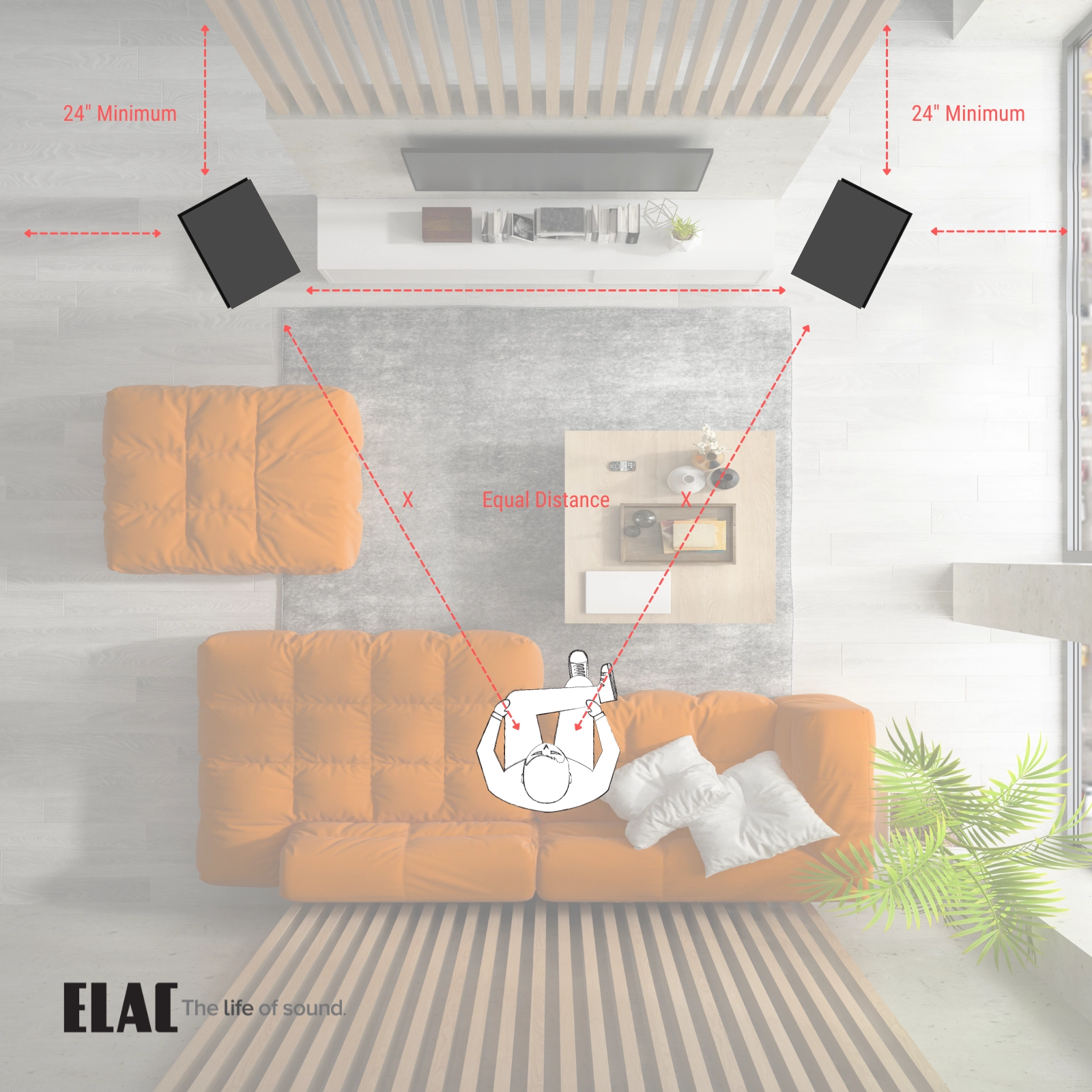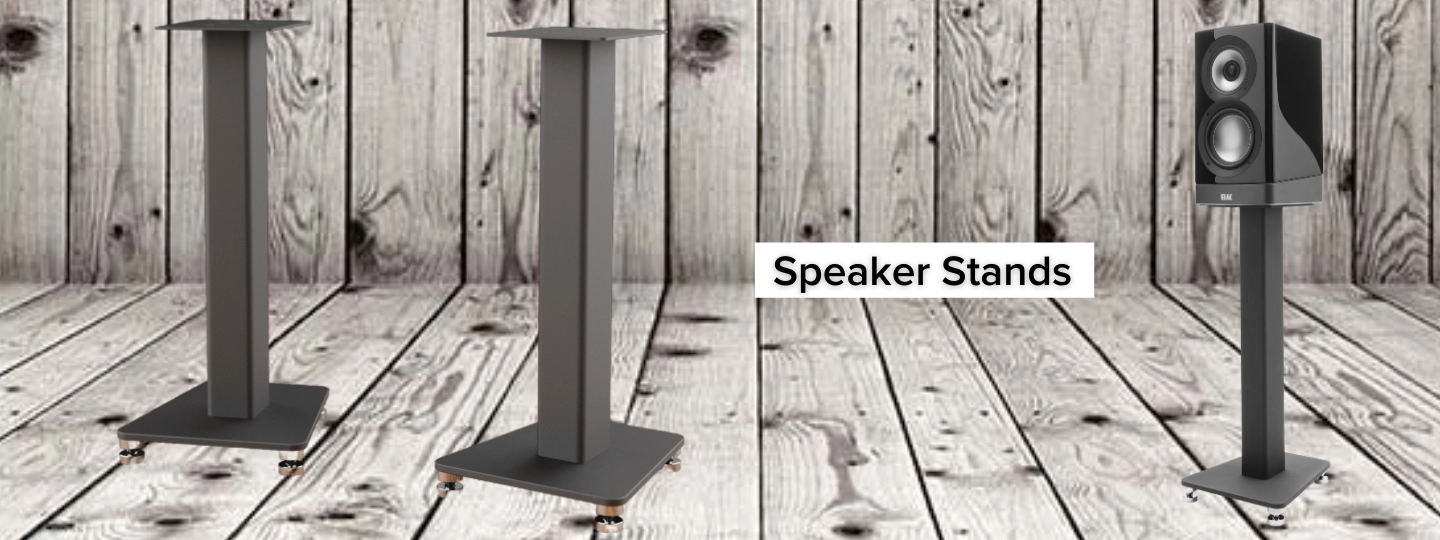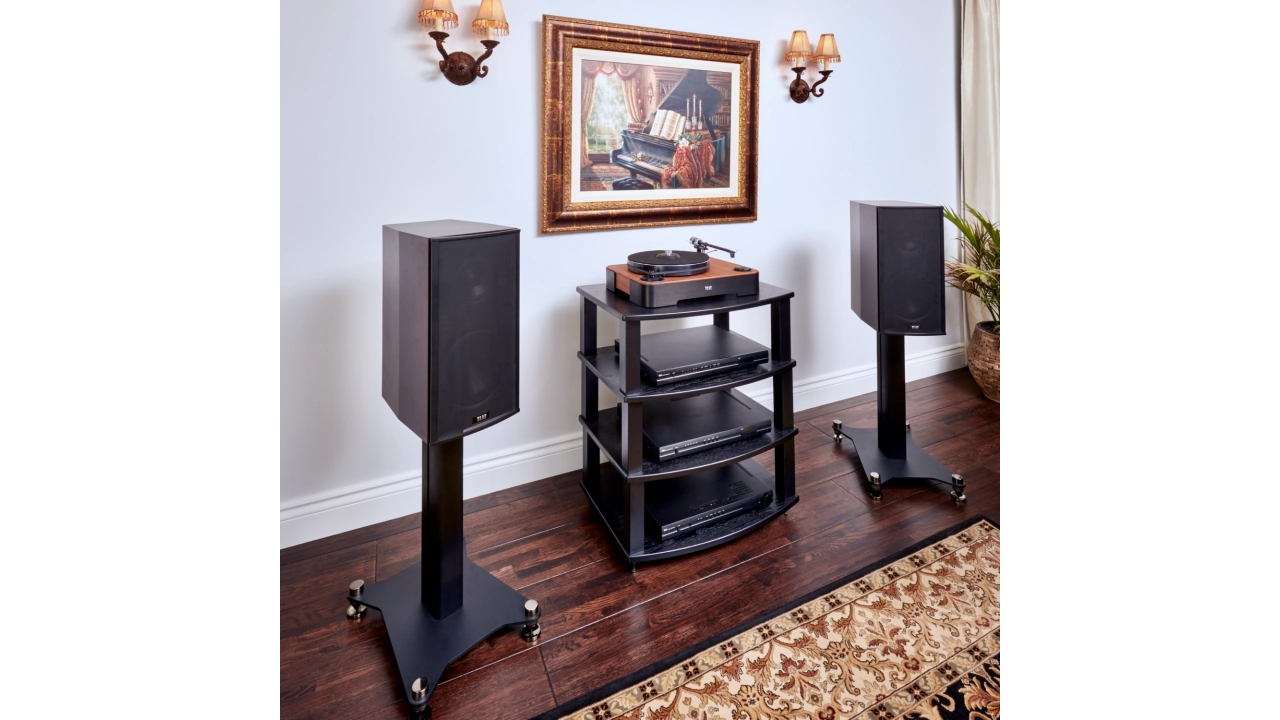Speaker Placement Guide: Get The Best Sound From Your Stereo
Regardless of what audio equipment you have, ensuring you position the speakers correctly will significantly enhance your listening experience. Due to the nature of sound and how it behaves at specific frequencies, proper placement will ensure that you hear the sounds as intended by the artist and the speaker designer.
Because each speaker is different and designed for different purposes, it’s always best to refer to the manufacturer’s instructions on speaker placement. If the manufacturer doesn’t provide instructions, you can use the guidelines below that apply to a large majority of speakers. This should either give you the results your looking for, or provide you with a starting point that you can then adjust and tweak to your liking.
Room Speaker Placement
Try and create as much symmetry as possible between you and your speakers. The optimal placement is to center your speakers along the longest wall in the room (so that each speaker is equal distance to the walls on each side of the room).
Wall Proximity
Try to keep your speakers at least 2-3 feet away from the nearest walls. This will minimize “Boundary Interference” (we’ll discuss what this is later in the article) and sound reflections, which can negatively impact playback clarity. In addition, speakers placed in corners can create undesirable bass buildup, creating an unbalanced sound.
If you need to place your speaker near the wall, try to pick a speaker with a front-firing port (like the Debut Bookshelf Speaker) or a bottom-firing port (like the Carina Speakers).

Aim to Create a Triangle
The distance between the 2 speakers should be roughly the same as the distance as each speaker to your listening position—so that you form something close to an equilateral triangle (see above image).
Perfect room symmetry is not always possible in a home setup, but if you can at least create a triangle between the two speakers and your listening position, you’re eliminating many of the problems you could encounter. This technique will minimize sound imbalance and help ensure that the left and right channels reach your ears simultaneously.
Speaker Separation
Speakers that are either too close or too far apart will not present the best stereo imaging, meaning either a muddy sound or a massive gap in the soundstage.
Aim for at least 4 feet of space between speakers for bookshelves. For Tower/Floorstanding speakers, some recommend 8 feet between each speaker, due to floorstanders generally being designed for listening at a distance.
Turn Your Speakers “Toe-In.”
Angle your speakers inward, directed at the listening position, creating a straight line between the drivers and your ear. You can decrease the toe-in angle if you want a wider listening space (if you mostly listen to music with friends!). You can experiment and adjust the angle of your speakers a few degrees at a time until you hit that sweet spot!
Again, it’s always best to consult the manufacturer’s specifications, as some speakers are designed to be positioned parallel to the back wall (therefore, you wouldn’t turn them toe-in).
Speaker Height
You want your speakers positioned so that the tweeters are roughly the same height as your ears (keep reading to learn more about frequency directionality).
If you’re using Tower Speakers, you don’t have a lot of control over height. However, for Bookshelf Speakers, speaker stands will help you get the speaker closer to the sweet spot while offering a few other benefits.
Do My Bookshelves Need Stands for Optimal Speaker Placement?

If you have the space, we would recommend placing your bookshelf speakers on speaker stands, as they provide several benefits:
- Speaker stands to raise your bookshelf speakers to the proper height for your ears
- They reduce unwanted resonances that can be transmitted through your furniture
- They allow greater flexibility to position your speakers optimally
Some speaker designers will even provide acoustically (and stylistically) matched stands for your bookshelf speakers.
The obvious downside to using Speaker Stands is the additional space they require. A Bookshelf speaker on a stand takes up the same space as a floorstanding speaker.
Why Does Speaker Placement Matter?
Is all of this nitpicking over where to stick a pair of speakers really worth the hassle?
Speaker technology has come a long way in the past several decades. However, even though speaker designers have accomplished some amazing feats to reduce the impact of speaker placement, some fundamental physical limitations are hard to overcome.
The “Sweet Spot”
To produce the best sound possible, a speaker must contend with several harsh realities. First, speaker designers must ensure the sound produced from the speaker drivers all hit your ears at the same time while also minimizing sound reflections from the room and the actual speaker itself.
Due to these acoustical limitations, almost all speakers will have a “Sweet Spot,” where you’ll get the best experience if you position yourself at the optimal listening position.
Some speakers will have a wider sweet spot, and some will be more narrow. Often there are tradeoffs between offering a wider sweet spot that sounds good versus delivering the best possible performance to a narrow field.
This is one of the many tradeoffs that designers contend with when designing speakers. Some speakers make use of modern technologies, such as concentric drivers or sound dispersion techniques that are said to give speakers a wider sweet spot.
The Directionality of High Frequencies
High frequencies are more directional. As you move outside “The Sweet Spot,” you’ll hear less of the high frequencies relative to other frequencies, giving you an unbalanced sound. Low frequencies are less directional, but they tend to build up in certain spots.
Low End and “Boundary Interference”
Bass frequencies come with their own set of problems. As you get lower in the frequency spectrum, sound waves become less directional and begin transmitting in all directions (in other words, as you move out of the “sweet spot,” you will still hear the Bass frequencies). Therefore, you’ll need to be conscious of “Boundary Interference,” which literally refers to hard boundaries in your listening space; such as walls, windows, ceiling height, etc.
For example, placing your speaker near a wall will have a noticeable bass-boosting effect. Place that speaker in a corner, and the low end boost will be even more significant.
You may be thinking: “Bass Boost? That sounds like something I want!” You’re free to experiment, but generally, this boost is uneven, meaning specific bass notes will stick out and others will not. Some speakers are designed to be used near wall, but unless the manufacturer states otherwise, you’ll want to aim to keep your speakers out of corners, and about 24″ (or more) away from the wall.
Another consideration is rear ported speaker. While every speaker is different, a general rule of thumb is to keep speakers with rear ports away from walls to avoid buildup of energy. But if you’re willing to experiment, you can test a few different placements and see what sounds best.
Ideal vs. Real World Speaker Placement
In Hi-Fi audio, there’s always a “best” way to set everything to get your system’s best possible sound and performance. Unfortunately, the perfect setup does not often align with what’s possible in our home layout.
Not everyone has a perfectly symmetrical room, isolated from outside noise, with acoustic treatment. Sometimes you just don’t have the space to make everything work. Sometimes you share a living area with another person, and they may have a strong opinion about your massive floorstanding speakers taking up too much room…
You get the idea.
With that in mind, do your best to get as close as possible to the guidelines below, within reason. As you get deeper into the hobby, you may want to improve your listening space, either rearranging your setup or moving to a dedicated listening room.
Proper Speaker Placement Offers the Best Possible Performance
Hopefully, this helps us understand the “whys” of speaker placement. While there’s no “one-size-fits-all” solution, the guidelines above are the perfect starting point. The standard triangle setup is how most speaker designers intend you set up your system to minimize any external factors that can degrade sound quality.

